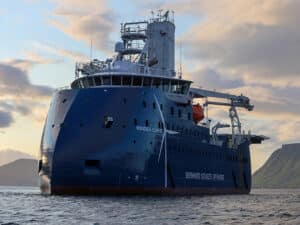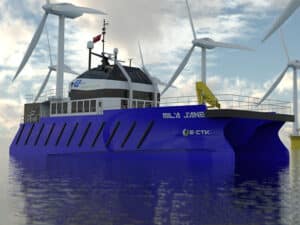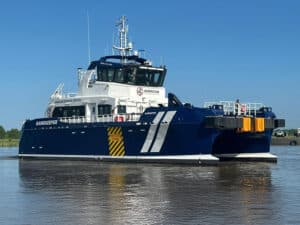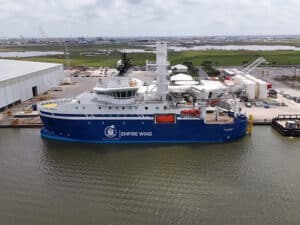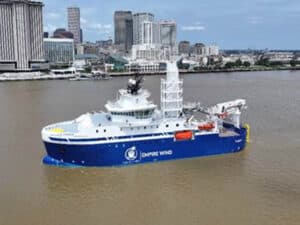
Op-Ed: Balancing decarbonization and energy security
Written by Heather Ervin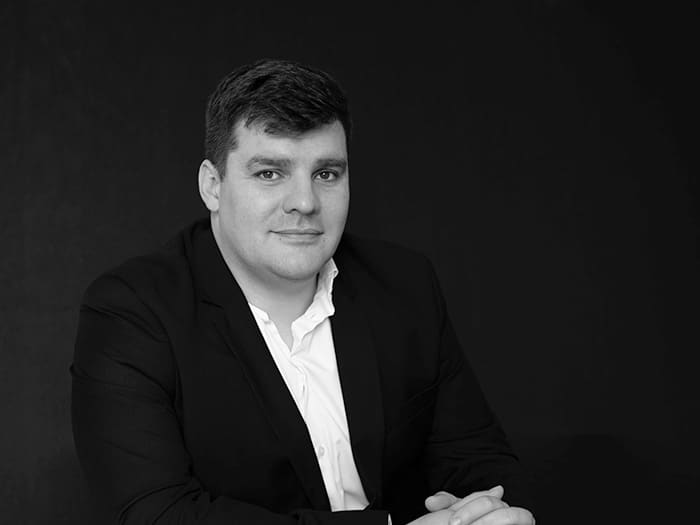
Martiens Potgieter,
By Martiens Potgieter, Project Manager at Baseblue
In an era of growing concerns about climate change and energy security, the global push for decarbonization remains high on the agenda. The recent geopolitical tensions surrounding energy sources, notably the Russia-Ukraine conflict, have highlighted the need for nations to reduce their reliance on international energy supplies. One significant development is the rising interest in wind energy, with companies worldwide looking to harness this resource to secure their energy future.
This increase in demand, in a relatively short time frame, is affecting supply chains and will result in prices ebbing and flowing when it comes to procuring fuel to support the growth of this sector, given the significant investments needed at the installation phase of wind farm development.
The evolution of wind energy
To date, this increase in wind energy has mainly been focused on fixed bottom wind farms which have limitations in terms of water depth and can become massively expensive. They often require complex installation materials, vessels and equipment which can significantly add to the costs of the development phase, as well as the emissions profile of a wind farm’s lifecycle, not to mention the extra time it takes for wind farm developers to see a return on their investments.
Floating wind farms provide a solution to this and are increasingly becoming the next generation for offshore wind solutions. Floating wind farms also enable developers to install farms further offshore by enabling the deployment of turbines in larger and deeper offshore areas with higher wind potential. Experts are estimating that they could harness wind resources in waters over 60 meters deep, offering a vast expansion of potential sites.
Emissions lifecycle challenges
For companies building these wind farms, the main emissions profile of the lifecycle still comes at the installation phase, but given the nature of the floating wind farms, they can be installed much faster and towed to their location, rather than taking a long time to install and maintain out at sea.
Hedging is one way in which long and unpredictable installation times can be solved. By bringing confidence to the installation phase, hedging helps to de-risk projects by providing a cushion for variable pricing commitments. One of the highest risks of expenditure when it comes to installing offshore wind farms is the fuel, and field operators are often exposed to pricing fluctuations in the market; it is important that customers have a partner that can help them to secure strategic contracts in specific ports that enable them to benefit from low emission fuels in specific locations.
The price of oil can fluctuate whilst building an offshore wind site which can lead to contractors running out of budget, hedging alleviates this risk by ensuring that both parties commit to a fixed price for a set amount of time. This process can be replicated at various stages of a projects life cycle, acting to control the variables, increase confidence so that budgets are maintained and schedules are met.
When it comes to reducing the emissions profile of the installation phase a range of measures are needed. From modelling and monitoring the weather patterns to reduce fuel consumption, measuring costs strategically throughout the installation phase, to identifying best locations to refuel in terms of alternative fuel availability and price, these are all key considerations.
Another area where we are increasingly supporting our customers is around traceability. There is already a considerable onus on vessels to monitor, report and verify their performance and keep to annual ESG reporting commitments. This is only going to increase with the EU ETS regulations that will begin to impact the offshore wind sector as we approach 2027, it is imperative for companies to be able to track their emissions profiles from start to finish. We can support them by putting a dedicated product on a vessel, for example a low emission biofuel from the Netherlands, and track the entire emissions profiles of the fuel once it arrives at the final location, providing traceability and transparency throughout the supply chain. It shouldn’t be overlooked that improved traceability helps in other areas where accurate and transparent reporting is required, such non-price factors on tenders, potential Government grants, general public perception and so on.
There is an urgent need for the world to look for new ways of ensuring energy security whilst not adding to the world’s climate challenge in the process. It is important that all parties, from fuel providers to installation managers, to wind farm developers, work together to ensure that we are looking at wind farm installation holistically and are not invertedly adding to the problem we are trying to solve in the pursuit of greener energy. We all want a greener future, but we need to get there in a responsible and considered way.

